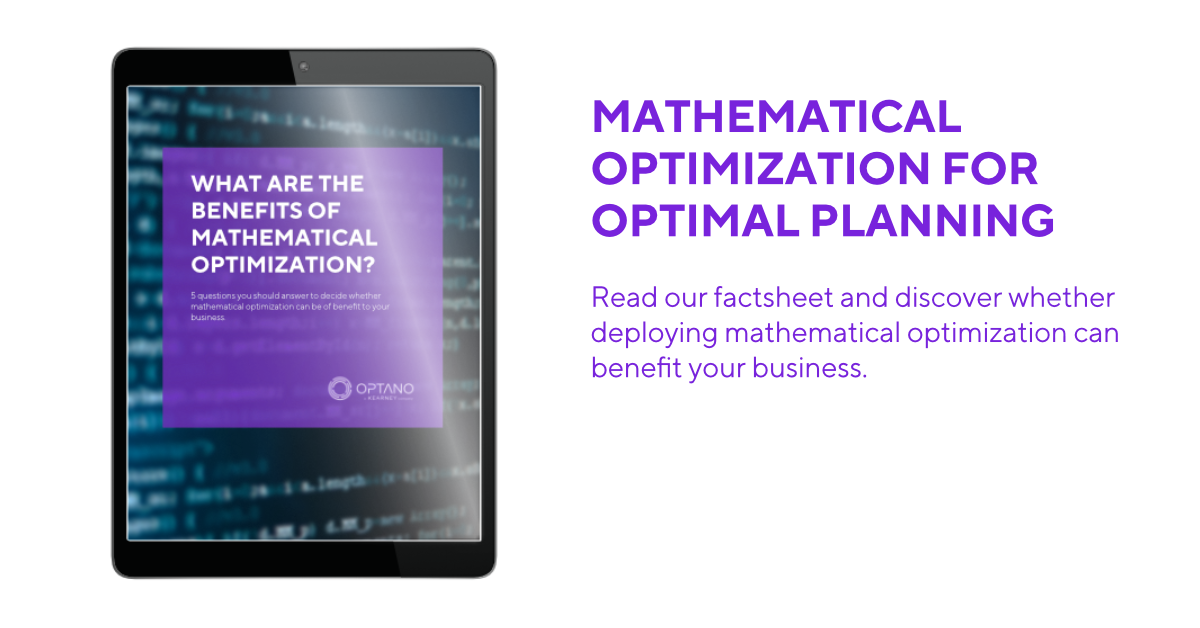Between innovation
and uncertainty
The automotive industry is undergoing significant change. Shifting global markets, rapid technological advancements, and stringent environmental regulations are driving far-reaching changes.
In this blog post, we examine the various current planning challenges in the automotive industry and their impact on production, market dynamics, and competitiveness. A key aspect is the complexity of supply chains, which is increasing due to crises, rapid technological progress, material bottlenecks, and rising manufacturing costs caused by tariffs and taxes, among other things. These uncertainties put pressure on companies to respond quickly to market changes to ensure long-term competitiveness.
The impact of electrification on supply chains
Technological change in the automotive industry is largely driven by the electrification of vehicles. This step towards more sustainable mobility plays a decisive role in climate protection. Automakers are being forced to make this change in response to increased consumer environmental awareness as well as government regulations and legislation.
However, implementing these changes also requires adjustments and restructuring in the supply chains. As the use of green technologies increases, so does the demand for components such as electric motors and battery cells, as well as specific raw materials such as lithium and cobalt. Automotive manufacturers and suppliers are being forced to find suppliers of these new materials and restructure their production and distribution networks accordingly.
Demand for electrical components is highly volatile, particularly due to the increasing adoption of electric vehicles and geopolitical events that cause sudden spikes in demand. This volatility requires manufacturers to adapt quickly and poses significant challenges to supply chain flexibility, especially in times of raw material shortages and supply constraints. Manufacturers must be able to respond effectively to market fluctuations to ensure a steady supply. To avoid production downtime and loss of efficiency, there must be visibility into the supply chain and the ability to react quickly.
Supply Chain Globalization and Localization
The automotive industry today faces the complex challenge of balancing globalization and localization in its supply chains. On the one hand, globalization offers significant cost benefits. With access to cheaper resources in the form of lower wages and raw materials in certain regions, companies can achieve economies of scale that significantly reduce their production costs. This enables not only competitive pricing, but also investment in research and development to drive innovation.
On the other hand, localization is becoming increasingly important. The trend toward local production close to core markets is not only a response to rising transportation costs, but also a strategy to improve responsiveness to market changes. In addition, local production minimizes the risk of logistical disruptions caused by geopolitical tensions or trade conflicts.
In an era of increasing trade barriers and political instability, the ability of automotive companies to create flexible and resilient supply chains is becoming critical to their success. The strategic decision of whether to globalize or localize becomes a key challenge to optimize both efficiency and agility in an increasingly uncertain economic environment.
Importance of tariffs to the supply chain
Customs policy has a far-reaching impact on the automotive industry’s supply chains, affecting not only the cost structure but also the overall competitiveness of companies.
Rising import or punitive tariffs imposed by countries on imported vehicles have a significant impact on the competitiveness of automakers as they are forced to adjust their pricing policies. In most cases, the cost increases caused by tariffs are passed on to consumers through price increases, who often opt for cheaper alternatives. Higher selling prices not only affect sales, but also market share and can weaken global competitiveness.
Tariffs also affect the cost structure of manufacturers. For example, higher costs for imported materials such as steel and aluminum lead to rising production costs, which put pressure on margins.
To overcome these challenges, automotive manufacturers are trying to optimize their supply chains by expanding some of their production capacity in local markets to take advantage of potentially more favorable trade terms, as well as local tax breaks and subsidies. At the same time, they are seeking local suppliers to reduce their reliance on tariffed imports.

Are you interested in our factsheet?
What are the benefits of mathematical optimization?
Mathematical optimization: the key to automotive adaptability
As described above, electrification and current tariff policies, among others, are having a profound impact on global supply chains. In addition, the automotive industry faces the challenge of finding the right balance between globalization and localization. All of these issues require far-reaching changes in companies’ sourcing, production and distribution strategies.
Given the complexity of this task, simple planning using Excel, for example, is not sufficient. Mathematical optimization offers an effective solution: it enables companies to achieve the optimum, even with a large number of restrictions and constraints. By using mathematical models, decisions can be made on a scientifically sound basis, allowing companies to adapt their strategies in a targeted manner.
More interesting articles
Mathematical optimization and OPTANO as a solution to supply chain challenges
Planning software such as OPTANO offers a decisive advantage in the upcoming transformation processes in the automotive industry. Through the targeted use of mathematical optimization, OPTANO enables data-driven decisions that result in both sustainable cost reductions and greater flexibility.
Optimization of the network structure
Mathematical optimization models are essential for optimizing complex network structures. They help companies select suppliers and identify optimal production locations to realize cost advantages and economies of scale.
The OPTANO network optimization solution takes into account relevant localization factors such as delivery routes and location selection to maximize responsiveness to market changes. It also helps minimize the risk of logistics disruptions by developing alternative sourcing and production strategies.
In the automotive industry, OPTANO contributes to the sustainable optimization of production and distribution networks by supporting the selection of suitable suppliers and identifying optimal locations. This drives the integration of new technologies, such as electrification, while addressing the dual challenge of globalization and localization.
Flexibility with tariff changes
Integrating the impact of tariffs and trade restrictions into mathematical analyses is a key strength of OPTANO. The optimization models used enable precise quantification of the potential impact of tariff changes on overall costs, allowing companies to flexibly adapt their supply chain strategies to changing conditions.
As a result, automotive manufacturers and suppliers can respond to regulatory changes and optimize their purchasing terms and production strategies to remain competitive.
Scenario analysis for targeted adjustments
Mathematical optimization enables comprehensive analysis and comparison of different scenarios in terms of transportation costs and production effort. OPTANO provides scenario comparisons and visualizations that allow companies to quickly evaluate different strategies and identify the best solutions to improve their networks and supply chains. These data-driven insights enable the targeted reallocation and efficient deployment of resources.
Transparency for clear decisions
An outstanding feature of OPTANO is the transparency created by combining and analyzing all relevant data. Companies benefit from a clear overview of their current capacities and volumes, allowing them to flexibly adapt their strategies and react quickly to market-relevant changes. This agility is essential to meet specific requirements and unforeseen developments.
Optimization for flexible and competitive supply chains in the automotive industry
The targeted use of mathematical optimization makes automotive supply chains and networks not only more predictable, but also more adaptable. As a result, automotive manufacturers and suppliers gain the ability to be proactive. Ultimately, they gain a sustainable competitive advantage and are better prepared to meet the challenges of their industry.
Do you already know our factsheet on this topic?

In our factsheet “What are the benefits of mathematical optimization?” we ask 5 questions to help you assess whether mathematical optimization brings benefits to your organization.
To obtain our factsheet, all you need to do is enter your contact details in the space below. A pop-up window will then open to download the whitepaper. Please note that by providing us with your email address, you agree that we may contact you on this topic. You may revoke this agreement at any time by contacting privacy@optano.com.






